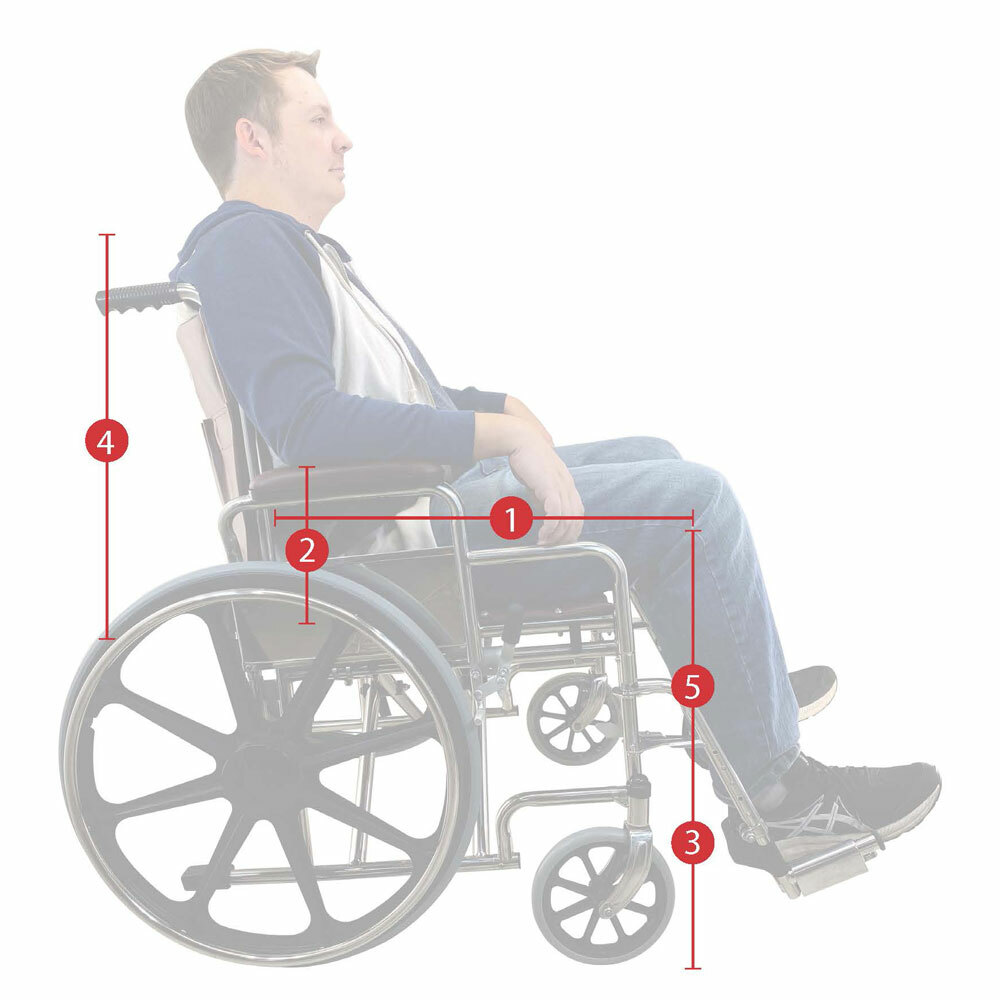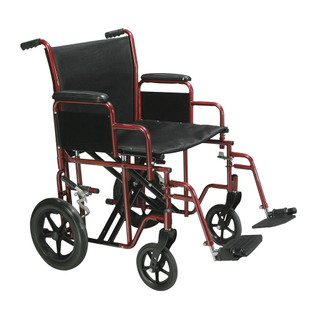How do I know if I need a Wheelchair?
Chairs will be fitted by your needs and body, including:
- Seat Height
- Leg Rests
- Backrest Angle
- Arm Positioning
How do I know the Difference Between wheelchairs?
- Electric Wheelchair - Electric wheelchair is a motorized wheelchair that has its own internal power source, such as a battery pack. Electric wheelchairs enable users to maneuver more easily than with traditional manual wheelchairs. They also provide many of the same benefits as large-wheeled scooters, but they have larger seats and are much easier to handle in tight spaces.
Price - $2,000 to $6,000 - Manual Wheelchair - Manual wheelchair is also called a self-propelled wheelchair, is designed to be propelled by the person who uses it. Manual wheelchairs are reliable and easy to use, but they tend to be lighter than electric wheelchairs. This means that it require less strength to engage and disengage the wheels than an electric wheelchair.
Price - $300 to $2,000
- Transport Chair - Transport wheelchairs are not self-propelled and need to be pushed by someone else. Transport wheelchairs usually feature two big wheel and two small wheel in front. The large wheels are used for easy moving on the flat floor, while small wheels can be used up and down stairs. Transport wheelchair is often used in hospitals or nursing homes when patient needs frequent transfers between different places inside the facility.
Price - $100 to 1,500
- Comparison - Wheelchairs and transport chairs are both designed to help those who need assistance getting around. However, there is a fundamental difference between the two: wheelchairs have large wheels that users push themselves around, while transport chairs have smaller wheels, which are operated by others.
How long will a wheelchair last me?
- Electric Wheelchair - The battery life of a electric wheelchair is essential to the length of time it can get you from A to B, and the distance you can expect to go on a full charge. Fully charged power wheelchair batteries last for at least 8 hours and can be expected to achieve a range of around 10 miles, though if you’ve got a good one, you might be able to expect closer to 20 miles. With a overall life of the batteries lasting between one and two years.
- Manual Wheelchair - Wheelchairs are expensive, so it may help to know how long you can expect yours to last. With a few simple checks and repairs, you should be able to keep your wheelchair in good working order for five years or more. Regular maintenance is essential to keeping your wheelchair in working order, so that you can get the most out of your chair and enjoy it for as long as possible.
How do I choose a wheelchair size?
If you’re buying a wheelchair, there are a few sizing factors that are important – wheel diameter, seat width and depth, arm height. You’ll also want to account for the curve of your shoulder, knee and elbow in your measurements and double check before ordering.

(1) Determine Seat Size
- Measure your hip width across (measuring the widest point of your hips or thighs)
- Add 1”
- Add thickness of side cushions (If you choose to add cushions)
(2) Determine Arm Type and Height
Measure from your elbow to the seat while your holding one arm up with your elbow at a 90-degree angle.
- Full Length Armrest: Best used for people who frequently stand up to pivot and transfer to another surface.
- Desk Length Armrest: Best used for patients that need to be seated at a desk or table.
(3) Determine Footrest Style
- Swing Away Footrests are manual swing away footrests offer convenience and comfort for your wheelchair user. With a simple push of the button, the footrests swing out of the way to allow for transfers, walking and sitting. Their convenient design ensures easy access to the seat cushion when not in use.
- Elevating Footrest is a great option for users who require additional height adjustment. The elevating footrest can be adjusted in increments, either up or down. This option may also provide some relief to users with pressure sores, as it allows you to change the angle of your weight distribution over a larger surface area on your knees and shins.
- Articulating Legrests have comfort, stability and convenience with the articulating legrest. The fully adjustable legrest helps you sit up straighter and aligns your knee with the wheel of your chair. The backrest can also be reclined for optimal pressure relief if you need it.
(4) Determine Back Height
- Measure from the base of the patients neck to there tail bone.
- Add thickness for any extra cushions if used
- Subtract 3”
(5) Determine Floor to Seat Height
|
Height
|
Wheelchair Size | Seat-To-Floor Height |
| 5'5" | Hemi | 17-1/2" |
| 5'5" to 6'2" | Adult | 19-1/2" to 20-1/2" |
| 21 1/2" | Tall | over 6'2' |
Wheelchair sizing goes off of the seat upholstery width and not over all chair width. Ensure to check your overall wheel width and wheel diameter to fit through tight spaces
Determine Wheelchair Weight and Weight Limit
- Lightweight wheelchairs: 200-250lbs
- Standard wheelchairs: 250-350lbs
- Heavy-Duty wheelchairs: 350lbs and above
Electric Wheelchairs
To visit our full line of accessories please visit: Electric Wheelchairs
Manual Wheelchairs
Manual wheelchairs have many advantages over electric wheelchairs. They are easier to use, safer and more durable. They are the best choice for people who can walk at least part of the time and for those who need a wheelchair for back-up or when travelling. Fixed-position manual wheelchairs are easy to transport, store and maintain. Get off at any point along your way with these manual wheelchairs.
When you’re looking for a manual wheelchair, think about how often you’ll need to use it, where you will be using it and the situations in which it is required. You should also consider how quickly a person can get independently in and out of the chair, as well as whether they (or their caregiver) can safely lift and move them if necessary. For example, making sure that the feet rest can be adjusted for various lengths on each side is important when shopping for a manual wheelchair. Lastly, don’t forget about color options and accessories like cushions and storage pouches that can make one chair better than another for your lifestyle.
To visit our full line of accessories please visit: Manual Wheelchairs
 Silver Sport 2 |
 Blue Streak |
 Cruiser III |
 Tracer EX2 |
 Traveler SE Plus |
Transport Chairs
To visit our full line of accessories please visit: Transport Chairs
 Polly Fly |
 19" Alum. Transport Chair |
 17" Steel Transport Chair |
 Duet Transport Chair |
 ProBasics K4 Transformer Chair |
 20" Wide HD Transport Chair |
Our Top Selling wheelchair Accessories
To visit our full line of accessories please visit: Wheelchair Accessories
 Cup Holder |
 Umbrella |
 Tray |
 Gloves |
 Enabler Table |
 O2 Holder |
 Anti-theft Bar |
 Safety Belt |
 Anti-roll Back |
 Brake Extension |

